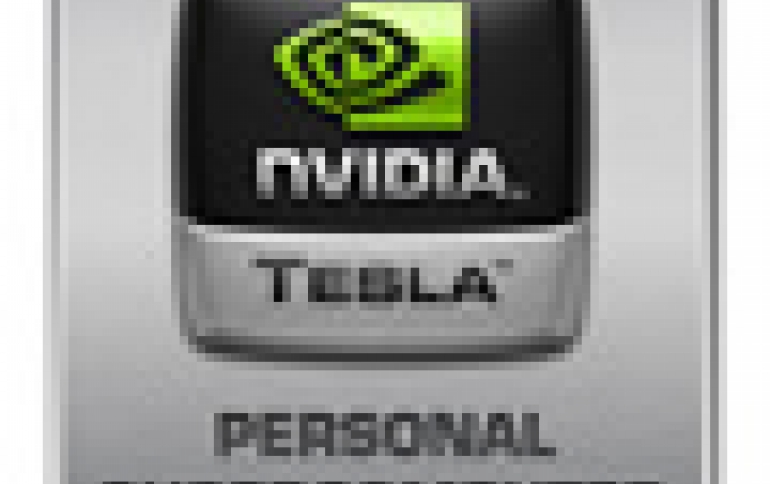
Nvidia Promotes its CUDA GPU Computing Solutions
Nvidia and its partners today announced the availability of the GPU-based Tesla Personal Supercomputer, which delivers the equivalent computing power of a cluster, at 1/100th of the price and in a form factor of a standard desktop workstation.
At the core of this solution is the Tesla C1060 GPU Computing Processor which is based on the NVIDIA CUDA parallel computing architecture. CUDA enables developers and researchers to harness the parallel computational power of Tesla through industry standard C.
Tesla GPU-based Personal Supercomputers are priced like a conventional PC workstation, yet delivering 250 times the processing power, according to Nvidia. Available in configurations of up to 4 Tesla GPUs in a single system, Tesla Personal Supercomputers deliver up to 4 Teraflops of computing performance from up to 960 parallel processing cores.
The solution could give researchers the horsepower to perform complex, data-intensive computations right at their desk.
"GPUs have evolved to the point where many real world applications are easily implemented on them and run significantly faster than on multi-core systems," said Prof. Jack Dongarra, director of the Innovative Computing Laboratory at the University of Tennessee and author of LINPACK. "Future computing architectures will be hybrid systems with parallel-core GPUs working in tandem with multi-core CPUs."

Institutions including MIT, the Max Planck Institute, University of Illinois at Urbana-Champaign, Cambridge University, and others are already advancing their research using GPU-based personal supercomputers.
At SC08, Wolfram Research will demonstrate a new version of Mathematica that integrates the CUDA parallel GPU computing architecture. This new version is expected to give Mathematica users a performance increase of 10-100X in numerical computing, modeling, simulation and visual computations, without the need to learn or write C code. The CUDA accelerated version of Mathematica is expected to be available in Q1 2009.
Dell has also announced the Precision R5400 and T7400 systems that are based on the Tesla C1060 GPU. Lenovo is offering the D10 ThinkStation equipped with Tesla C870 GPU. Similar solutions are expected from Nvidia's partners.
Tesla GPU-based Personal Supercomputers are priced like a conventional PC workstation, yet delivering 250 times the processing power, according to Nvidia. Available in configurations of up to 4 Tesla GPUs in a single system, Tesla Personal Supercomputers deliver up to 4 Teraflops of computing performance from up to 960 parallel processing cores.
The solution could give researchers the horsepower to perform complex, data-intensive computations right at their desk.
"GPUs have evolved to the point where many real world applications are easily implemented on them and run significantly faster than on multi-core systems," said Prof. Jack Dongarra, director of the Innovative Computing Laboratory at the University of Tennessee and author of LINPACK. "Future computing architectures will be hybrid systems with parallel-core GPUs working in tandem with multi-core CPUs."

Institutions including MIT, the Max Planck Institute, University of Illinois at Urbana-Champaign, Cambridge University, and others are already advancing their research using GPU-based personal supercomputers.
At SC08, Wolfram Research will demonstrate a new version of Mathematica that integrates the CUDA parallel GPU computing architecture. This new version is expected to give Mathematica users a performance increase of 10-100X in numerical computing, modeling, simulation and visual computations, without the need to learn or write C code. The CUDA accelerated version of Mathematica is expected to be available in Q1 2009.
Dell has also announced the Precision R5400 and T7400 systems that are based on the Tesla C1060 GPU. Lenovo is offering the D10 ThinkStation equipped with Tesla C870 GPU. Similar solutions are expected from Nvidia's partners.





















